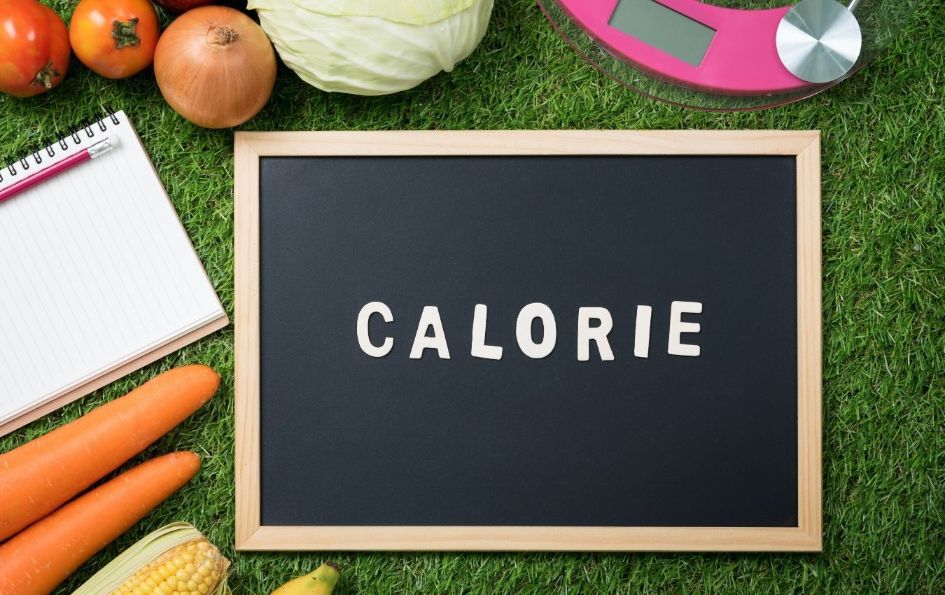Unquestionably when you read “caloric restriction,” low-calorie diets come to mind and the promise of losing weight by consuming diet products and diet shakes. This is normal. Caloric restriction is the most prescribed nutritional intervention for weight loss in the last 20 years.
But paradoxically, calorie restriction is a disaster strategy for losing weight.
👉 Based on several studies, after 5 years of following a calorie-restricted diet, almost 100% of people have regained their weight, and 40% are heavier than before.
So, what is the point of writing about this topic?
The reason is that calorie restriction has a very interesting, beneficial effect: LONGER LIFE.
In this article, you will learn everything you need to know about calorie restriction and its anti-aging effects, and you will understand how to use it correctly.
We will also reveal how studies on caloric restriction have set the trend in health most fashionable today: fasting.
What is the calorie restriction?

For a food protocol to be caloric restriction, it should ideally meet these characteristics:
- It is a protocol extended in time.
- Reduce your intake until you have a deficit of between 20% and 50% of the calories we need.
- It does not represent the deprivation of the macronutrients and micronutrients necessary for the body.
- It is essential to consider that unlike fasting, in calorie restriction, there is no planned intake restriction for hours. Usually, the opposite, several intakes of small portions of food are made.
The effects of calorie restriction.

- Caloric restriction in animals and why there is no black and white in biology
- Animal experimentation indicates that caloric restriction delays the onset of age-related chronic diseases. This is a consistent result in all animals studied: worms, flies, fish, mice, rats, and monkeys.
Caloric restriction has also been shown to extend lifespan in multiple organisms.
These results are so evident that, as early as 80 years ago, caloric restriction was proposed as a dietary intervention to extend life.
For example, this 1935 study showed that rats fed calorically deficient lived longer than free-fed rats, without limit.
👉 But on the other hand, studies on caloric restriction in animals show us that in biology, there is no black and white and that there are thousands of factors that affect our body.
For example, take two of the most important studies on caloric restriction:
The two looked at the health effects of caloric restriction and its impact on rhesus monkeys’ longevity, slightly more human-like than rats.
What is interesting is that these studies had different conclusions and, at some points, contradictory.
Both studies show that caloric restriction was associated with a substantial decrease in the risk of developing age-related diseases.
But surprisingly, the survival rates were different between the two studies:
- In the University of Wisconsin study, calorie-restricted monkeys lived twice as long as control monkeys.
- But the National Institute of Aging (NIA) analysis showed no survival benefits for the monkeys.
These differences may surprise us, but we can see some significant differences if we look closely at the two studies.
The monkeys at the University of Wisconsin were fed a standardized diet. But the monkeys in the National Institute of Aging study were fed a natural diet.
In the two studies, the caloric restriction was similar (around 30%). Still, in the case of NIA, the monkeys’ diet was much higher in the general content of nutrients and fiber. However, in the Wisconsin study, the diet was substantially higher in sugar.
Monkeys’ feeding times also varied since the University of Wisconsin monkeys were allowed to eat during the day but were restricted at night, and the National Institute of Aging monkeys were restricted during the day. Still, they were allowed to eat during the night.
👉 For these reasons, I would like to save these points for the next section:
- It seems that not the only caloric restriction is essential in health.
- The quality of food and how we distribute it over time are also crucial factors.
- Studies in rhesus monkeys may provide adequate clues about the effect on humans because we share many genetic and physiological characteristics.
- That observations from these studies suggest that caloric restriction may be healthy in humans.
It is time to analyze the effects of calorie restriction in humans.
Let’s go for it!
Caloric restriction in humans

In humans, several studies help us better understand the effects of caloric restriction.
In two of them, the effect of short-term calorie restriction was studied.
The first result observed is a very significant decrease in the participants’ basal metabolism and total energy consumption.
For example, in one of the studies, after 3 weeks of caloric restriction, basal metabolism had decreased by an average of 100 KCal/day and total energy consumption by 510 KCal/day. In other words, the participants used 63% of the energy they had used before starting the experiment.
These results have been confirmed with another study where a decrease of 255 KCal/day in basal metabolism was observed in people exposed to 10 weeks of caloric restriction.
👉 One of the effects of caloric restriction is a decrease in metabolism. This explains, in part, the loss of effectiveness as a tool to lose weight of these long-term diets: you eat fewer calories but also spend less.
Another study studied long-term caloric restriction (with a 30% reduction over 3-15 years) and compared the results with a control group consuming a traditional Western diet.
This study demonstrated that long-term caloric restriction induces remarkable global biochemical and molecular changes.
Participants who practiced long-term calorie restriction exhibited:
- Higher cortisol levels and a decrease in inflammation compared to participants who ate the Western diet.
- Increase of factors involved in cell cleaning (such as autophagy study).
- Finally, several pilot studies (called CALERIE 1 and 2) have investigated the feasibility and results of long-term calorie restriction in humans.
CALERIE 1 is a set of 3 studies where caloric restriction of 20-30% was studied in healthy people without obesity between 6 and 12 months.
The studies differed in the participants’ ages, weights of the participants, and a varied caloric restriction level.
However, it is possible to obtain some general observations from this result, despite the diversity among study subjects.
👉 For example, a decrease in:
- Fasting insulin levels
- Bone mass
- General energy expenditure
- Body temperature
- Muscle tone
- Markers of oxidative stress.
- Damage to mitochondrial DNA
👉 Instead, it increased:
- Insulin sensitivity.
- The synthesis of mitochondrial DNA.
- The proportion of muscle mass.
- Improvements in lipid profile were observed in some studies, but not in all.
A study analyzed the effect of caloric restriction.
A study examined the effect of caloric restriction for two years in 218 young and middle-aged adult participants, standard weight, or moderately overweight.
These participants were randomly assigned to either receive a calorie-restricted diet for two years (25% reduction) or follow their usual diet.
The results showed that the calorie-restricted participants had:
- Lower total cholesterol levels (although this indicator is not necessarily useful as we saw in our article on cholesterol).
- Lowering your levels of LDL cholesterol, triglycerides, C-reactive protein, TNF-alpha, and blood pressure.
- Sensitivity to HDL cholesterol and insulin increased.
- However, the study shows that only 12% of the participants were strict, with a 25% calorie restriction for 2 years.
👉In short, from human studies, we extrapolate that caloric restriction has beneficial effects on metabolism, inflammatory markers and oxidative stress, and blood pressure. On the contrary, it is an exhausting strategy (decrease in metabolism, loss of bone mass), and very low adherence.
What body mechanisms are associated with caloric restriction?
Despite multiple studies, the mechanisms by which calorie restriction works are not entirely clear.
Caloric restriction regulates multiple molecular, cellular, and metabolic pathways that promote protein homeostasis, genomic stability, resistance to oxidative stress, and stem cells’ proper functioning. That is, ways associated with repair and regeneration.
👉 The cellular perception of decreased energy and arrival of nutrients by the cell activates these repair pathways.
Some of the molecular adaptations identified involve a greater activity of sirtuins, FOXO proteins, NRF2, and our beloved AMPK.
At the level of cellular adaptation, we can highlight an increase in autophagy and DNA repair.
Together, these adaptations promote metabolic improvements through decreases in IGF-1, mTOR (essential for muscle growth as we saw in this article), insulin, inflammation, and oxidative stress.
The challenges of calorie restriction

It is essential to mention all the studies that demonstrate the anti-aging effect of caloric restriction have been carried out in animals.
👉 Human studies present several problems:
- The studies are performed with very few individuals.
- Either the calorie restriction time was short (a few months and even a few weeks), being insufficient to induce the metabolic and hormonal adaptations associated with anti-aging.
- Or in the case of extended studies, the level of adherence is very low. For example, towards the end of the two-year study, only 12% of the participants maintained caloric restriction.
- It is also true that some of the participants in these trials were overweight, making it much more difficult to find evidence of long-term benefits other than weight loss in normal-weight individuals.
- In animal studies, caloric restriction was relatively high (up to 50% of normal intake) than humans (20-30%).
Caloric restriction is difficult to follow.

👉 Caloric restriction is a very difficult strategy to follow, as it involves constant suffering. That is why it has never been possible to replicate the studies done on animals (obligatory) in humans (volunteers).
It is also important to note that one of the actions to restrict the number of calories is to turn the ingredients towards foods rich in protein because they are more satiating. This generates the activation of the pathways that involve mTOR and IGF-1, both antagonistic ways that we saw in the previous section (AMPK, FOXO), which may boycott the beneficial effects that have been observed in animal tests.
Today we know, from trials with mice, monkeys, and humans, that these extreme diets can cause wound healing problems, immune responses, or the ability to withstand low temperatures.
On the other hand, chronic caloric restriction could significantly affect many diseases such as cancer, diabetes, and cardiovascular diseases. It could also reduce or slow down neurodegenerative diseases. Still, these positive effects probably offset other negative ones, such as the appearance of different disease types and variables that have not been well studied.
👉 Experiments on caloric restriction confirm:
- A remarkable effect in reducing a broad spectrum of severe diseases
- Capable of leaving the body in a state of reduced basal metabolism.
- And you also have to consider the last limitation. Adherence.
The constant decrease in calories leads us to obsess over food, be cold, and ultimately have a bad time, so the big problem with this intervention is sustaining it over time.
Viable alternatives to calorie restriction
There is more evidence for calorie restriction practices that may become not only more sustainable.
One of them is to generate a cellular energy crisis by minimizing glucose and fat supplies for a short period, known as intermittent fasting.
This crisis encourages the release of fat stores and promotes the oxidation of fatty acids and the production of ketone bodies. During this time, the human body prioritizes the protection of muscle mass and function.
The practice of fasting improves body composition and triggers processes that optimize human performance and biological function.
👉 These mechanisms are carried out through the same molecular mechanisms as caloric restriction.
The best known restrictive practices are:
- Restricted food on the day. That is, reduce the intake window at certain times of the day. Outside of this window, no type of food is consumed, and there is no caloric restriction.
- Intermittent fasting This practice includes not eating for 24 to 36 hours one or more times during the week.
- Prolonged fasting, must last more than 48 hours and last for several weeks.
As you can imagine, these three practices are not mutually exclusive. You can have a daily intake window, and once a week, do a 24-hour fast, for example.
An extra personal reflection
As I have mentioned above, one of the most potent signals that lead to the activation of cellular repair mechanisms is the lack of energy.
👉 You should know that not all cells run out of energy simultaneously. There are systems (such as the immune system or the central nervous system) that the body will protect against energy deficiency.
That is why I have the suspicion that the brain, which will hardly run out of energy, activates its repair mechanisms when it perceives that there is a clear challenge for survival.
Hence, both sport, such as the increase in temperature and ketones (which indicates that we are using body reserves), activate neural growth factors.
For this reason, I believe (in the absence of studies on the matter) that if we want to influence brain regeneration, a short but intense signal such as a 48-72 hour fast is more efficient, which resembles a challenge for survival a caloric restriction prolonged.
Conclusions on calorie restriction

There is evidence that caloric restriction delays chronic age-related diseases and prolongs the life span in multiple organisms.
These clinical trials suggest that calorie restriction may offer similar health benefits to humans, but none of the studies have yielded conclusive results.
Caloric restriction makes our body more fragile and less able to react to other impacts.
You can get the same or greater benefits with other different interventions. These benefits have been proven in humans, as you can see in our intermittent fasting article.
As a veteran fitness technology innovator and the founder of GearUpToFit.com, Alex Papaioannou stands at the intersection of health science and artificial intelligence. With over a decade of specialized experience in digital wellness solutions, he’s transforming how people approach their fitness journey through data-driven methodologies.